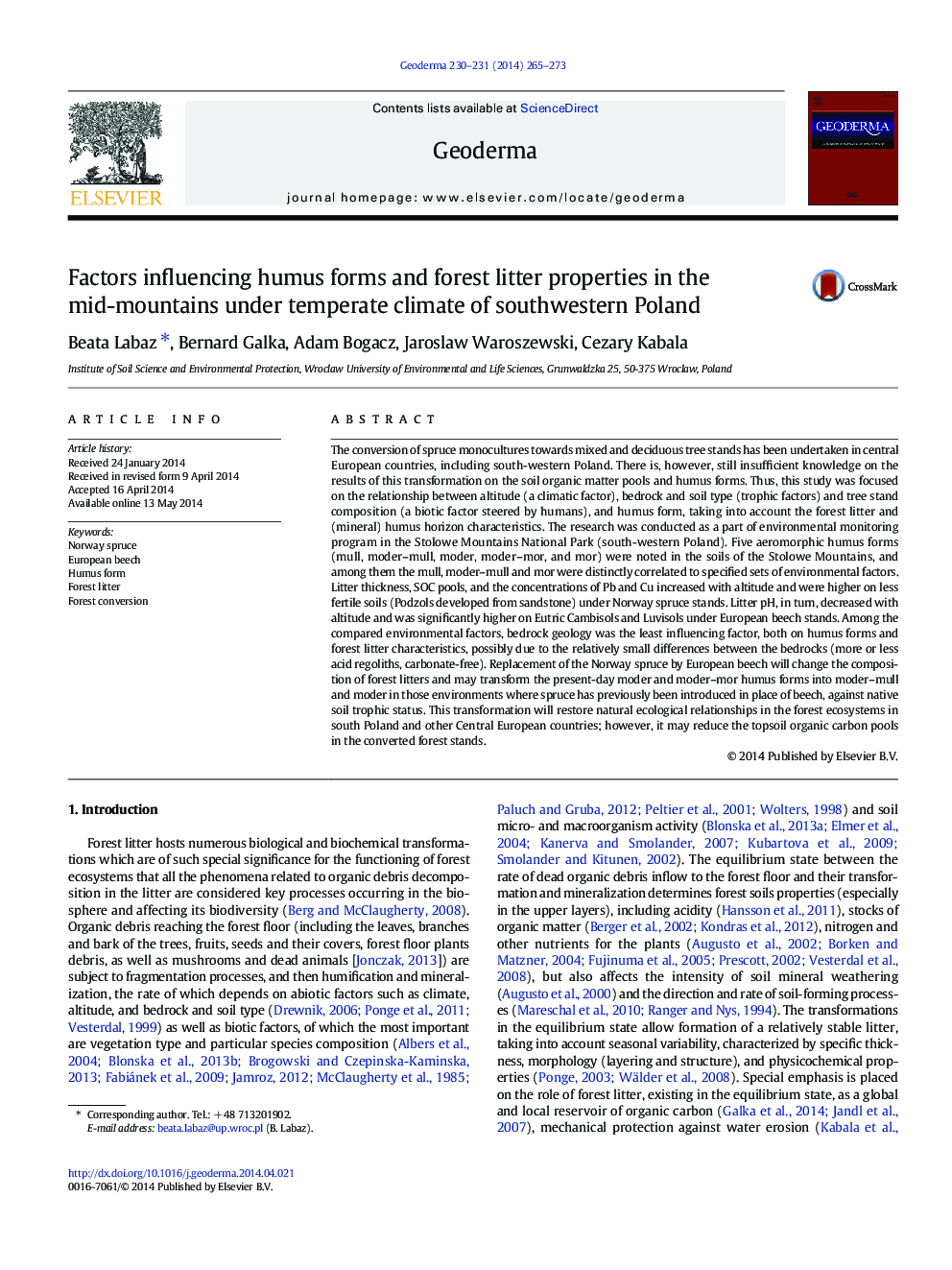| کد مقاله | کد نشریه | سال انتشار | مقاله انگلیسی | نسخه تمام متن |
|---|---|---|---|---|
| 4573252 | 1629470 | 2014 | 9 صفحه PDF | دانلود رایگان |
• Humus forms were recognized on 358 plots on granites, sandstones and mudstones.
• Mor humus significantly prevails over moder and mull forms.
• Humus forms were affected by: tree species > soil parent material > altitude.
• Close relationships were found between litter and humus horizon characteristics.
• Spruce replacement with beech forces mor humus transition to moder/mull–moder.
The conversion of spruce monocultures towards mixed and deciduous tree stands has been undertaken in central European countries, including south-western Poland. There is, however, still insufficient knowledge on the results of this transformation on the soil organic matter pools and humus forms. Thus, this study was focused on the relationship between altitude (a climatic factor), bedrock and soil type (trophic factors) and tree stand composition (a biotic factor steered by humans), and humus form, taking into account the forest litter and (mineral) humus horizon characteristics. The research was conducted as a part of environmental monitoring program in the Stolowe Mountains National Park (south-western Poland). Five aeromorphic humus forms (mull, moder–mull, moder, moder–mor, and mor) were noted in the soils of the Stolowe Mountains, and among them the mull, moder–mull and mor were distinctly correlated to specified sets of environmental factors. Litter thickness, SOC pools, and the concentrations of Pb and Cu increased with altitude and were higher on less fertile soils (Podzols developed from sandstone) under Norway spruce stands. Litter pH, in turn, decreased with altitude and was significantly higher on Eutric Cambisols and Luvisols under European beech stands. Among the compared environmental factors, bedrock geology was the least influencing factor, both on humus forms and forest litter characteristics, possibly due to the relatively small differences between the bedrocks (more or less acid regoliths, carbonate-free). Replacement of the Norway spruce by European beech will change the composition of forest litters and may transform the present-day moder and moder–mor humus forms into moder–mull and moder in those environments where spruce has previously been introduced in place of beech, against native soil trophic status. This transformation will restore natural ecological relationships in the forest ecosystems in south Poland and other Central European countries; however, it may reduce the topsoil organic carbon pools in the converted forest stands.
Journal: Geoderma - Volumes 230–231, October 2014, Pages 265–273
